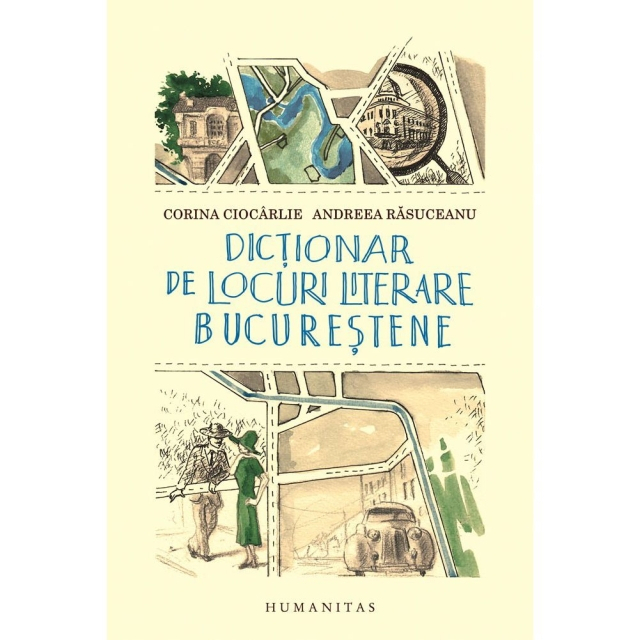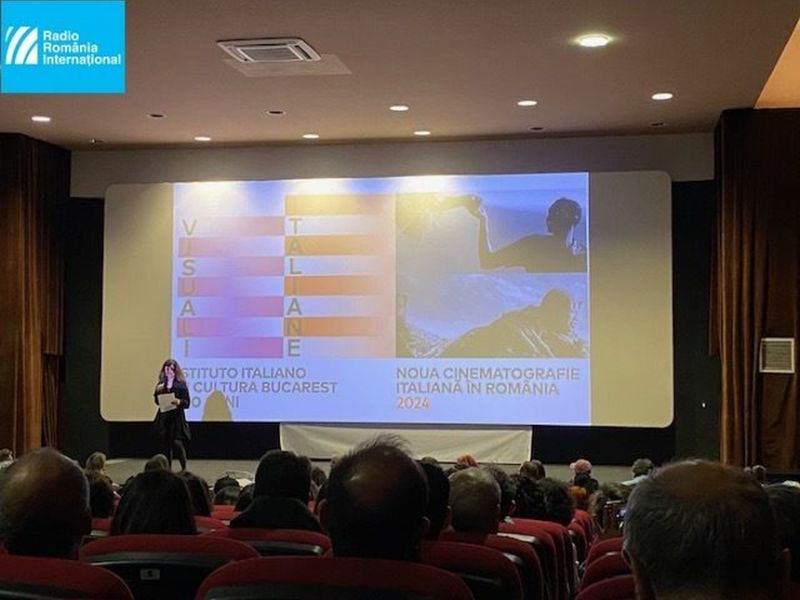The Dictionary of Literary Places in Bucharest
The Dictionary of Literary Places in Bucharest tells 167 stories about literary Bucharest
Warning: Trying to access array offset on null in /home/web/rri.ro/public/wp-content/themes/rri/template-parts/content.php on line 53

Warning: Trying to access array offset on null in /home/web/rri.ro/public/wp-content/themes/rri/template-parts/content.php on line 98
Corina Sabău,
25.04.2020, 14:00
The Dictionary of Literary Places in Bucharest, a volume signed by Andreea Rasuceanu and Corina Ciocarlie, tells 167 stories about literary Bucharest. The authors started by reviewing two thousand urban places and legends relevant to important figures in Romanian literature, for the real or literary geography of the city. As the two write in the book, ‘Real or fictitious, the streets, alleys, and boulevards fork apart and answer you, giving birth to a series of interconnected stories: from Amzei, in Romana Square, from the Atheneum to Cismigiu Park, from Cotroceni to Dudesti, the trajectories of characters draw a virtual map of Bucharest, which the reader can use for orientation in their urban and Romanian perambulations.’. Here is one of the authors, Andreea Rasuceanu, writer and literary critic:
“We had a moment of panic at first, it was a pretty frightening idea to run once again all the way through most of Romanian literature. And that’s how it happened, that’s how it started, we read once again many Romanian writers. We decided to start with a few core periods, we started with the 19th century, then dwelt on interbellum writers, for whom we negotiated quite a lot, and we finally got to contemporary writers, of which I’ve written before, but I tried not to go back to authors I already have covered. Corina Ciocarlie was an extraordinary partner, with an enthusiasm that blended with mine. I think this is the secret of the book, we both have an extraordinary passion for Bucharest and its stories. In addition, we completed each other naturally, because this time I wanted to explore the periphery too, while Corina wanted to stay within the bounds of the center areas. I wanted to write about the colorful Bucharest, the Bucharest of slums on the edges, about the Cudarita Pits, named after engineer Nicolae Cudarita, which lent its name to the novel ‘The Pits’ by Eugen Barbu, written in 1957. I also wanted to write about the Buzesti area, with its extraordinary neighborhood dives, which, as a character puts it, ‘make you open your eyes to life’. I also wrote about the Filantropia slum, about Calea Grivitei road, about that area that is still uncharted, a blank space, in which you can see urban evolution, you can see how the city rises.
The Dictionary of Literary Places in Bucharest had the intention of being, according to one of its co-authors, ‘a sort of revenge of a Bucharest that was mutilated, molested, disappeared, a vengeful reading of a beloved city’. Here is Corina Ciocarlie, PhD, literary critic:
“In the pages of the dictionary, the Uranus neighborhood has not yet been razed, Casa Scanteii has not yet replaced Baneasa Hippodrome, Sala Dalles still has its modernist facade of the 1930s, and behind Lido Hotel you can still hear the alluring murmur of the famous wave pool. Even this bookstore, where we are tonight, Humanitas Cismigiu Bookstore, if we were to look out the window of fiction, we would see an extraordinary Elisabeta Boulevard. A running spectacle, with eccentric outfits and hairdos, with passionate love affairs, adultery, and betrayal like you see in the movies. Between Cismigiu Park and Gambrinus Beer Hall on the one side, and Capitol Cinema and the Military Club on the other, if we were to look through the window of fiction, we would see all the high society of the interbellum period, starting with Nory Baldovin, from the novel Roots by Hortensia Bengescu, published in 1938, continuing with Emilia Rachitaru, from Procrustes’ Bed by Camil Petrescu, published in 1933, and ending with the unavoidable Mrs. T, the protagonist of that same novel. In any case, it would not be dull and boring, the facades would not be run down, the cinemas would still be open. Also, Letitia Branea, the protagonist of the trilogy by Gabriela Adamesteanu, recently arrived in Bucharest from Paris in the middle novel, Fontana di Trevi, would not be deploring the fact that, quote: ‘Elisabeta Boulevard has become a desolate landscape, with peeling buildings and pockmarked roofs, where the only point of light is the Humanitas Cismigiu Bookstore, two steps away from Gambrinus Beer Hall, shrunken but rebuilt.
In addition to naming a list of streets, The Dictionary of Literary Places in Bucharest lists monuments, railway stations, intersections, parks, squares, cafes, bars, hotels, cinemas, as well as antiquarian stalls and newspaper kiosks, each of them a beacon, a node in the symbolic web of the city.





























